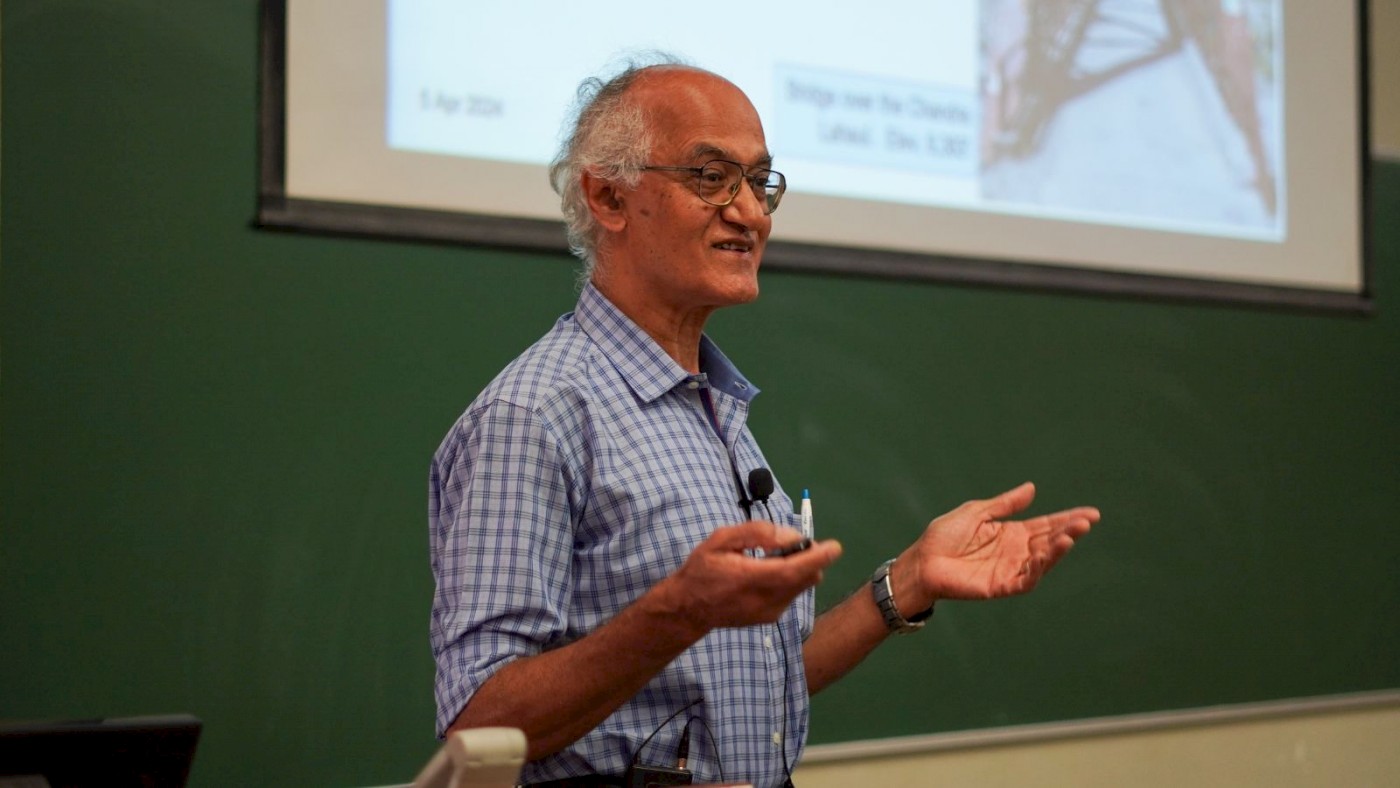
A mechanical body, electronic components, intricate software, unique shape, various colours, and much more go into the manufacturing and assembly of a remote control for a television or air conditioner. This example of just one item of daily use shows that the entire production chain, from conception to final product, requires the expertise of people from different backgrounds, making engineering inherently a multidisciplinary field. However, despite being an applied science, engineering is primarily taught theoretically, with less focus on devising pragmatic solutions for real-life problems. In such a backdrop, how can one integrate an engineering mindset with a problem-solving acumen? What does it mean to think like an engineer? Timothy Gonsalves, Distinguished Professor at Ahmedabad University’s School of Engineering and Applied Science, answers these and other questions, while deconstructing the basic concepts for driving an engineer’s thought process.
Thinking like an Engineer
Real-life problems demand pragmatic solutions that are located in a ‘doing’ rather than ‘thinking’ ecosystem. Thus, out-of-the-box creative ideas and the willingness to experiment are as much a part of an engineer’s thought process as technical knowledge and expertise.
Engineering thinking differs from scientific thinking in that an engineer needs to coalesce the application of skills and learning with common sense for meaningfully contributing to the development and advancement of society. History is replete with examples of engineering marvels produced by people who lacked an engineering degree or even a formal education but who had inquisitive minds and the desire to improve human lives. For instance, Thomas Morse, who invented the telegraph and spawned the telecommunications revolution, was basically a painter. Even the 16th-century Italian artist, Leonardo da Vinci, best known for his timeless paintings, ‘Mona Lisa’ and ‘The Last Supper’, was a technological genius, having conceptualised several civil engineering innovations, including an armoured fighting vehicle, the double hull for naval vessels, and automated bobbin winder, among other things, which laid the foundation for subsequent scientific inventions.
Coalescing Technical Knowledge and Common Sense
The above-mentioned examples, however, do not obviate the importance of state-of-the-art education for producing skilled and efficient engineers in the globalised world. A classic example is Chandrayaan 3, the outcome of India’s lunar space mission powered by highly accomplished engineers of the Indian Space Research Organisation (ISRO), who are equipped with specialised degrees in aerospace and mechanical engineering, among others. Citing these real-life developments, Professor Gonsalves reiterated the following basic concepts of an engineering mindset:
In accordance with these principles and the mandate to better the quality of human existence, Engineering Thinking is an amalgam of the following principles:
To summarise, the execution of these principles needs to be guided by the IDID model, as follows:
Blending Innovation with Education
New product development is often a result of reverse engineering. Companies embark on a journey of surveying existing product variants, and analysing features, internal design, cost, and other relevant aspects. Engineers endeavour to enhance the utility or cost-effectiveness of the product based on the ideas assimilated. This iterative process involves crafting prototypes of the new idea and seeking feedback from beta or lead customers. Finally, engineers create an in-depth, technical, and improved version of the product. Engineering students usually learn all the nuances of this process on the job, which ideally should be a part of their course curriculum.
Professor Gonsalves mentions how the growing need for a paradigm shift in conventional engineering education led to the rise of the LEAP (Learning Engineering by Activity with Products) programme. The programme, currently running in 13 colleges in India, offers engineering students with potential for excellence access to the technical knowledge and networking opportunities available to students in premier institutions in metropolitan areas. This initiative seeks to bridge the gap between theoretical understanding and practical application, enriching the educational journey for budding engineers.
Professor Gonsalves also suggests that Ahmedabad University has an innate advantage in offering multidisciplinary education, thereby allowing engineering and science students to learn alongside arts and management students. Going forward, this would prepare students for subsequently working in diverse teams along with colleagues from both technical and non-technical backgrounds in the course of their careers in the government as well as the private sector.
AI–A Vital Tool for an Engineer
Commenting on the rise of Artificial Intelligence (AI), Professor Gonsalves suggests that it is a powerful tool for reshaping the engineering landscape. Much like the advent of the steam engine during the Industrial Revolution, AI represents a significant shift in how engineers design and implement innovations. AI learns from existing knowledge systems and patterns, helping simplify tasks and streamline processes. However, its effectiveness relies heavily on well-formulated queries and human intervention. Engineers with their technical knowledge can effectively deploy AI for identifying needs, formulating queries, verifying solutions, and ensuring authenticity of the information generated, which underlines the symbiotic relationship between human creativity and technological advancement.